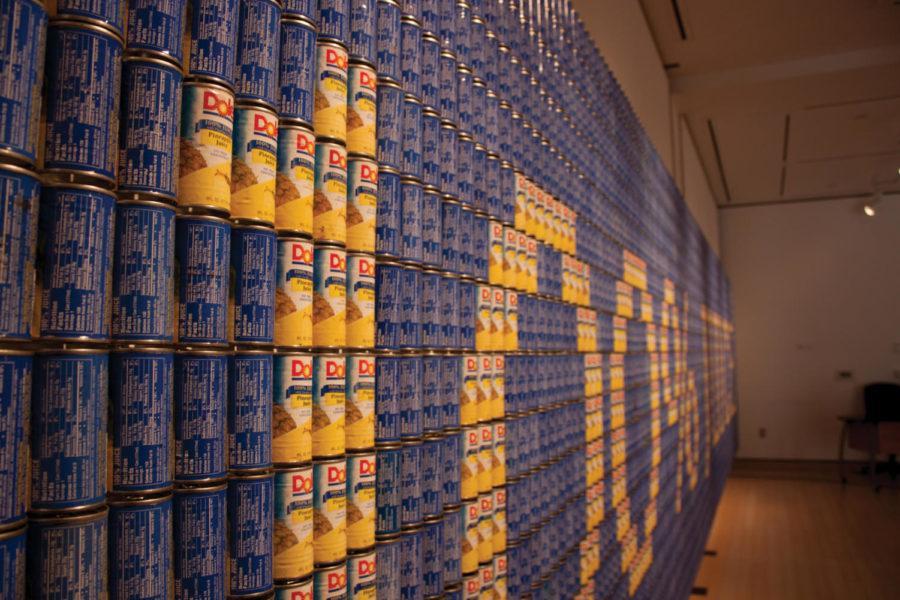Art interpretation develops visual learning, communication
November 5, 2012
On average, most people look at a work of art for eight seconds or fewer, during which time the viewer decides if he or she likes or dislikes what they see. Many people do not realize how visual learning and communication skills can be learned and developed just through the interpretation of art.
The current exhibit at the Christian Petersen Art Museum on campus is called “Post-Pop Redux,” by contemporary artist Andy Magee. “Post-Pop Redux” exhibits a collection of found-material sculptural art that combines individual viewers’ perceptions of everyday objects and familiar iconography.
The exhibition is curated by Nancy Girard, the educator for visual literacy and learning for university museums, and has already been incorporated into ISU classes.
“[Girard’s] goal in pulling together this contemporary exhibition was to then get faculty interested in the show and have their students integrate this into their curriculum,” said Lynette Pohlman, museum director for University Museums.
Pohlman said English 150 and animal science classes have been writing about the exhibit and interpreting Magee’s artwork.
“If you can read an object like you read a book, that can help you through your life,” Pohlman said.
Pohlman added that visual learning is an important skill for anyone, regardless of age or major — and Magee agrees.
Magee said his artwork in “Post-Pop Redux” is inspired by a variety of subjects and motifs that can have multiple, even polarized meanings, just depending on how you look at them.
“They can be viewed on many different levels, depending on how engaged the viewer wants to be,” Magee said.
Magee notes some of the themes running through most of the pieces are politics, religion, money, sex, consumption, waste, branding, marketing, passage of time, consumerism and individuality.
“Ultimately, they are iconoclastic. They offer viewers a way to see iconographic imagery and familiar materials in a new way,” Magee said. “Sometimes, that way is a subversion of how we are used to seeing them or understanding them.”
Young people are constantly bombarded by media and visual stimulus, which makes it easy for contemporary art to get lost in the clutter, Magee said. Magee wants students to be mindful, though, as he believes good art does not need any background to appreciate.
“Good art will engage anyone who is willing to invest their time, curiosity and intellect,” Magee said.
With more than 2,000 pieces of public art around campus, Iowa State emphasizes the importance of learning critical thinking and communication skills by interpreting artwork.
“Art can influence our lives by teaching us to be critical thinkers, to question norms and seek our own paths,” Magee said. “It can enlighten us and change the way we perceive the world around us. … This is what I hope my artwork does, in some small way.”

















